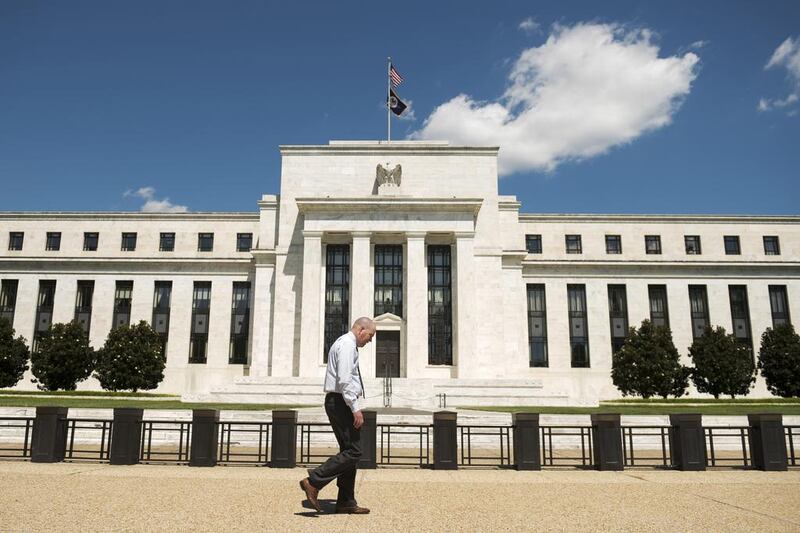The announcement of Saudi Arabia’s 2017 budget reinforces the market’s conviction that oil prices are eyed at the US$60 per barrel mark.
The budgeted revenue numbers have been calculated on an estimated oil price assumption of $55 per barrel and oil production at 10.1 million barrels per day (bpd), in line with commitments within the Opec and non-Opec Vienna agreement. An important takeaway from the latest budget announcement is that the main tools of the ongoing fiscal adjustment would be a combination of higher oil prices and higher non-oil revenues, in line with the measures to be introduced in the National Transformation Program.
Where is oil headed from here? So far so good for oil prices during 2017. Brent crude rose to its highest close in about 18 months on Friday, after US government data showed strong job and wage gains, while Kuwait and Saudi Arabia signalled they are reducing output. Kuwait is reducing output a bit more than it promised under Opec's November 30 accord, while Saudi Arabia told Asian customers to expect additional oil export cuts in February after reducing output by the required amount. Now Opec has to continue to deliver on its promise.
Oil last year registered its biggest annual gain since 2009 as Opec countries and 11 nations from outside the group agreed on a plan to reduce production. While suppliers including Kuwait, Iraq and Oman are said to have embarked on reducing output, an increase in output from countries such as Libya (exempt from cuts) could put upward pressure on others. Libya is reopening its last major oil export terminal and producing at its highest level in more than two years.
Libya used to pump about 1.6 million bpd before the 2011 uprising. International oil companies exited the country as rival governments and militias battled for control of Libya’s energy assets, and oil production fell to 45,000 bpd in the summer of 2011. It is hoped that by the end of this year, Libyan output will reach 1.2 million bpd.
Oil futures jumped last week because of the auspicious jobs numbers that came out of the US, which showed that the world’s biggest oil-consuming country added 156,000 jobs in December, while wages rose the most since 2009. The increase in wages and the number of employed point to stronger oil demand.
Besides conventional oil production concerns, such as Libya, we have yet to wait for the response from US shale producers. There are some early signs that the US shale industry could be picking up its output pace. Hiring has returned to the US energy sector. Payrolls went up in November for both oil and gas extraction labourers, which is a first since September 2014.
Arguably, when the December data comes in at the start of February, wages should show a paced increase as well, post-Opec agreement. But concerns remain. Natural gas prices have fallen extensively so far in January as winter hasn’t been as cold as expected. And if wages continue to rise in the US, consumer spending will also jump, which will underscore the need for the Federal Reserve to raise interest rates a few times this year, as policymakers deem the situation at or close to full employment. Higher rates in the US will put pressure on emerging markets and, by extension, oil demand.
The Federal Reserve’s move matters for oil. Not because of the usual relationship between oil and the dollar, which has faltered these past few years. The usual linkage between oil and the dollar as known for years is – oil prices tended to rise when the dollar was weak, and vice versa. The real question is where will demand come from. China, even if its slowdown is kept at a managed pace, is trying to shift its economy towards services and is also making efforts to cut pollution, which affects all industrial commodities. The rest of the emerging economies are on the cusp of recovery but with higher rates that recovery will become choppier.
For the oil-producing countries especially, those who still heavily depend on oil as their main source of revenue, the adjustment process will not be easy. The oil-dependent economies have entered an era of lower oil prices as the era of plenty has come to an end. For Saudi Arabia, the government’s shift to boost near-term growth is essential as is fiscal discipline. However, too much of the latter can lead to very little growth. Equally important, expecting to balance the revenue scale by simply increasing non-oil revenues, fees an indirect taxes in a short period of time, can depress growth and lower confidence.
For the near to medium term, energy policy is likely to remain focused on supporting oil market rebalancing and eventually oil prices. Saudi Arabia plans to idle some fields producing medium and heavier crude oil to meet its output reduction target. While Saudi Arabia has pledged to pump less oil, it is also trying not to give up sales in Asia, the world’s largest market, to competing supply from the Americas and Africa. It remains to be seen how the confluence of higher interest rates, anaemic global growth and US shale producers will affect oil prices.
John Sfakianakis is the director of economic research at the Gulf Research Centre in Riyadh.
business@thenational.ae
Follow The National's Business section on Twitter





